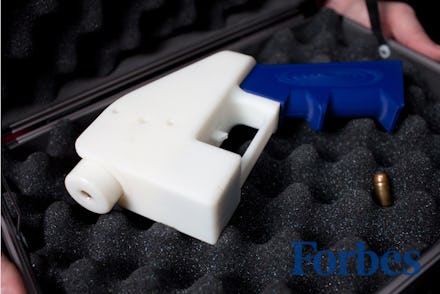Number Of 3D Printed Guns Could Explode With Expiration Of the Undetectable Firearms Act

Gun rights activists may find reason to rejoice on Dec. 9, which marks the expiration of the 1988 Undetectable Firearms Act that bans "undetectable guns." These invisible guns specifically refer to the increasingly popular 3D printed plastic weapons that are not registered as dangerous firearms by common metal detectors. Needless to say, Congress has begun to worry.
In response, Sen. Charles Schumer (D-N.Y.) and Sen. Bill Nelson (D-Fla.) have introduced legislation along with a separate version of the ban reintroduced by Rep. Steve Israel (D-N.Y.). Schumer and Nelson are looking to not only reinstate, but also to expand the previous bans by requiring guns to contain a significant amount of metal and be visibly recognizable as guns.
The current law, while comprehensive, has loopholes. Today, gun manufacturers are mandated to use a designated amount of metal in each weapon to ensure it can be registered by metal detectors in federal buildings like court houses, airports, schools, and other security screened locations. However, if a person were to simply attach a removable piece of metal to their gun, he can turn the illegal gun legal.
The Bureau of Alcohol, Tobacco, Firearms, and Explosives recently tested the Liberator model. Their findings illustrate that the plastic, almost toyish, gun was just as deadly as any other on the market, and uses so little metal that it can't be detected in standard screenings. They released in a statement: "The .380 bullets fired from the Liberator penetrate sufficiently to reach vital organs and perforate the skull."
Though 3D weapons still range upwards of $100,000 they are rapidly becoming more accessible to the average consumer. Appropriately, the bureau is anxious about the likelihood of increased crime and use of weapons especially in areas that were once perceived as secure.
Unfortunately, the Department of Homeland Security has recognized that it may be impossible to limit 3D printed access to weapons. Even with the current law in place, 3D guns don't require a manufacturing license, and the amount of mandated metal is still not enough to set off today's metal detectors. Plus, printers can now make their own bullets as well. Policy is racing to keep up with technology, and the fact is, it might not be fast enough to make a difference.